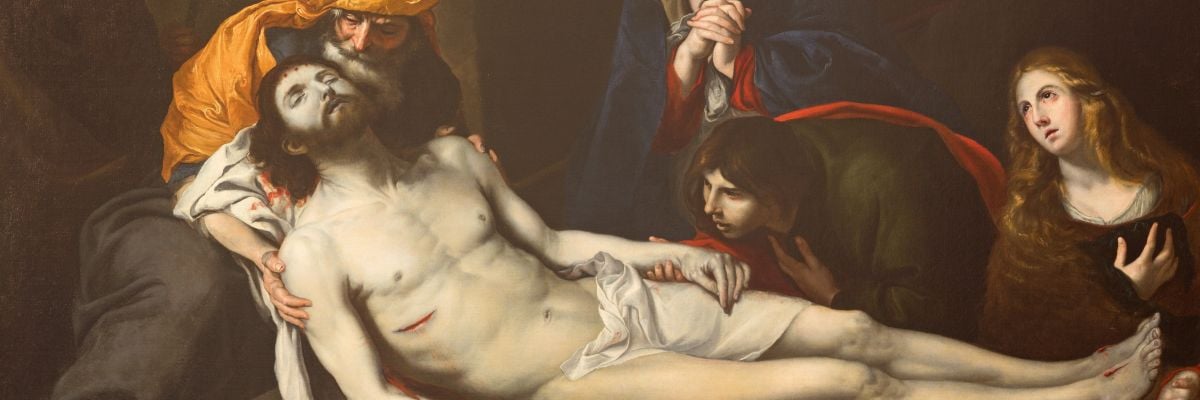

Passiontide, the two weeks between Passion Sunday and Easter. The last week is Holy Week, while the first is called by the Latins “Hebdomas Passionis”, by the Greeks “Week of the palms” (from the Sunday following). During this time the monks of the East, who had chosen the desert for a severer mode of life, returned to their monasteries (Cyril of Scythopolis in “Life of St. Euthymius”, n. 11). The rubrical prescriptions of the Roman Missal, Breviary, and “Caeremoniale Episcoporum” for this time are: before Vespers of Saturday preceding Passion Sunday the crosses, statues, and pictures of Our Lord and of the saints on the altar and throughout the church, with the sole exception of the crosses and pictures of the Way of the Cross, are to be covered with a violet veil, not translucent, nor in any way ornamented. The crosses remain covered until after the solemn denudation of the principal crucifix on Good Friday. The statues and pictures retain their covering, no matter what feast may occur, until the Gloria in Excelsis of Holy Saturday. According to an answer of the S. R. C. of May 14, 1878, the practice may be tolerated of keeping the statue of St. Joseph, if outside the sanctuary, uncovered during the month of March, which is dedicated to his honor, even during Passiontide. In the Masses de tempore the Psalm Judica is not said; the Gloria Patri is omitted at the Asperges, the Introit, and the Lavabo; only two orations are recited and the Preface is of the Holy Cross. In the Dominical and ferial offices of the Breviary the doxology is omitted in the Invitatorium and in the responses, whether long or short. The crosses are veiled because Christ during this time no longer walked openly among the people, but hid himself. Hence in the papal chapel the veiling formerly took place at the words of the Gospel: “Jesus autem abscondebat se.” Another reason is added by Durandus, namely that Christ’s divinity was hidden when he arrived at the time of His suffering and death. The images of the saints also are covered because it would seem improper for the servants to appear when the Master himself is hidden (Nilles, “Kal.”, II, 188). In some places the crosses were covered on Ash Wednesday; in others on the first Sunday of Lent. In England it was customary on the first Monday of Lent to cover up all the crucifixes, images of every kind, the reliquaries, and even the cup with the Blessed Sacrament. The cloths used were of white linen or silk and marked with a red cross (Rock, infra, IV, 258). The two beautiful hymns of the season, “Vexilla Regis” and “Pange lingua gloriosi”, are the work of Venantius Fortunatus (q.v.), Bishop of Poitiers. On the Friday of Passion Week the Church very appropriately honors the Seven Dolors of Our Lady. On Saturday the Greeks commemorate the resuscitation of Lazarus.
FRANCIS MERSHMAN


